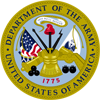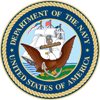|
Navy Rear AdmiralO-8 Flag Officer, U.S. Navy |
|
Navy Ranks » Rear Admiral Rank • RADM Pay • RADM Rank History • Promotion Information
 History of the Navy Rear Admiral Rank
History of the Navy Rear Admiral Rank
A Rear Admiral is a Flag Officer in the United States Navy at DoD paygrade O-8.
The title of "Admiral" is ancient, believed to be a conflation of the Latin word "admirabilis" (admirable) and the Arabic word, "amir al-bahr" (commander of the sea). Many of our military's earliest traditions come from the cross-cultural interactions in the High Middle Ages between Holy Roman and Byzantine Empires. The title has been in use for roughly one millenium.
The term "Rear Admiral" refers to, in British Naval warfighting, how a full Admiral would oversee a Fleet, in which the lead ships would be directed by a Vice Admiral and the rear ships controlled by a Rear Admiral. Only the United States divides this into "Upper Half" and "Lower Half", as other Navies use the title "Commodore" for one-star Rear Admirals. The USN tried using "Commodore" for a very brief period, but this introduced confusion since the title "Commodore" was already used for Squadron Commanders, who are typically O-6s. The "Lower Half" and "Upper Half" terms come from the whole of the Rear Admiralty, splitting it into quality of officers.
Want to learn more? Read about the Navy's Rear Admiral rank on Military-Ranks.org.
History of the Navy
The Navy traces its heritage back to the Revolutionary War, when Congress funded the construction of several warships to repel the British Empire. Nowadays, much of the Navy's mission is to defend international "freedom of the seas." The Navy considers itself to be more technology-centric than the Army, but more traditional than the Air Force. Surface ships patrol the seas, conducting diplomatic relations with all nations of the world, while also enforcing the law against pirates and drug smugglers. Aircraft Carriers are the most powerful individual assets in America's arsenal, with a single unit being able move and be a major player in an armed conflict. Submarines conduct clandestine intelligence-gathering operations. SEALs are internationally reknown for counter-terrorism and irregular warfare in every possible environment. All Sailors are both warfighters and technical specialists.







































































































































